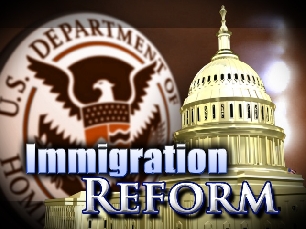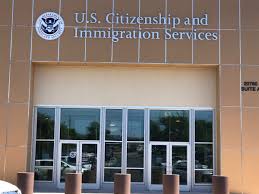Learn More About:
Immigration News & Updates eNewsletter © 2011 - 2021
For questions about U.S. Residency, Green Cards and Immigration Visas, Visit our Website at: www.ImmigrateToday.com or call our office at: (954) 382-5378
Check Out This Cool Stuff For Immigrants....
Immigration
Questions & Answers
This Week's Immigration News
Immigration News & Updates
Immigration How To:
How Do I Get The Conditions Removed Off My Two Year Green Card?
Questions About Immigration? We have the answers!
We Are Here To Help, Call us now for a FREE consultation (954) 382-5378
Biden’s Immigration Plan Seeks To Rebuild
Our Current U.S. Immigration System
AMERICAN IMMIGRATION
LAW CENTERS
Immigration Questions: (954) 382-5378
POSTING DATE: June 7, 2021
Question: My mom is a naturalized citizen and filed for my sister and her family back in 2010. She was married and had two kids, ages 11 and 13. Tragically, she passed away a few months ago from a heart attack she was only 42 years old. She leaves behind her husband, Clifford and her two boys in Jamaica. We are all heartbroken. Its only now that Clifford and I were talking last night that we realized her passing might affect the immigration case that my mom had filed for them. Our question is whether Clifford and the boys will still be able to immigrate here when the time comes in a few years? Is there any special visa that we can get so that they can come up here now?
American Immigration
Law Center
2645 Executive Park Drive
Suite 137
Weston, Florida 33331
According to the New York Times, a new 46-page draft blueprint obtained by the Times “maps out the Biden administration’s plans to significantly expand the legal immigration system show far-reaching efforts by President Biden to remake the immigration system and undo much of his predecessor’s legacy.”
The blueprint, dated May 3, 2021 and titled “D.H.S. Plan to Restore Trust in Our Legal Immigration System,” involves completely dismantling Trump administration policies and replacing them with a new, streamlined system to expand and encourage legal immigration. The plan aims to create shorter and simpler forms, speed up processing times and eliminate unnecessary roadblocks, making it faster and easier to immigrate to the U.S..
Helpful Immigration Tips You Can Use...
Tips On Making An E-Request On Your Pending Immigration Case
I never get tired of reminding readers how important it is to be informed about your immigration case, including qualifying, understanding the typical process, timing and staying updated on your case status. So assuming you have done all that, what happens when your case remains pending past the posted processing times? Or, the online status says the USCIS sent you a notice, but you never received it after 30 days? This is especially important now that there are such long processing delays caused by covid-19. Well, a helpful tool which can sometimes provide you with updated information or a duplicate notice is to file an USCIS E-Request. USCIS allows the E-Request to be filed for the following reasons:
Answer: No worries, the USCIS does not require immigrants to receive the COVID-19 vaccine as part of their required immigration examination and other vaccine protocols. The medical exam aims to screen out green card applicants who have certain health conditions, like communicable diseases such as syphilis or tuberculosis, drug or alcohol abuse or mental illness with a history of or threat of violence or other condition. During the medical exam the doctor will perform a physical exam, tuberculosis test, blood and urine test and vaccination screening which does not include the covid vaccine. Depending on age the USCIS requires vaccines for Mumps, Measles, Rubella, Polio, Tetanus and diphtheria, Pertussis and Haemophilus influenzae type B (Hib). Following the exam and test results, the doctors office will have you sign the medical exam results form and give you the results in a sealed envelope, which you will either include with your green card application, or bring to your green card interview. Do not break or open the sealed envelope. Always ask the doctor for a copy of the signed exam for your records.
Advice For Conditional Residents On Successfully Obtaining A Permanent Green Card
As most are aware, the foreign spouse of a U.S. Citizen or Resident, who has been married for less than two years at the time of obtaining residency, only receives a two-year Conditional Resident status. Unlike regular U.S. Residents who obtain a ten year Green Card through family members, employment or other means, many husbands and wives of U.S. Citizens only receive an initial two-year Green Card. In order to obtain permanent residency, the married couple must file a request for removal of the conditional status (Form I-751) within the 90 day period prior to the conditional Green Card expiration. Failure to file or filing late without an explanation can result in the foreign spouse being referred for removal proceedings (deportation).
Tips On Preparing For Your Naturalization Interview
Following recent Centers For Disease Control guidance on covid-19 protocols, the USCIS has updated its visitor policy. Under the new policy, fully vaccinated individuals are no longer required to wear face masks, however, individuals who are two years old and older who are not fully vaccinated must still wear a face covering.
To be considered fully vaccinated, at least two weeks must have lapsed since receiving the final second dose, or from the first dose of a single-dose vaccine. Other restrictions have been eased as well, including allowing individuals who have returned from either a domestic or international air flight or cruise in the past 10 days to enter USCIS facilities if they are fully vaccinated.
Face Masks No Longer Required At USCIS Offices
For Fully Vaccinated Individuals
To achieve this goal, the administration plans to reduce paperwork and unnecessary administrative requirements, fast-track immigration applications using electronic filing and expand the use of virtual interviews, as well as limit USCIS requests for evidence. Many immigration proponents believe that once the administration has successfully pushed infrastructure funding and voting rights legislation through congress, the next focus will be squarely on immigration. Democrats remain hopeful in gaining support from some Republicans on Biden’s sweeping immigration proposals. However, most seem willing to use whatever means necessary to bring the desired changes necessary to revolutionize our U.S. immigration system, including pushing through an immigration reform package using budget reconciliation to avoid the filibuster in the Senate, the use of emergency rules and presidential memos. Stay tuned….
Even individuals who have been in close contact (within six feet for a total of 15 minutes or more) with anyone known to have COVID-19 in the previous 14 days may also enter USCIS facilities if they are fully vaccinated. There is no indication that USCIS personnel will require proof of vaccination, however, it would not hurt to bring your vaccination card with you to your appointment.
USCIS Visitor Policy | USCIS
Most U.S. Residents who apply for naturalization feel excited about the prospect of becoming a U.S. Citizen, but very nervous and apprehensive about taking the required Civics test. And aside from the testing component of the process, most applicants don’t think much about the other aspects of their Naturalization appointment at USCIS.
That is why it’s important to understand that much more happens at the interview than just taking the test and properly preparing for all the aspects of the appointment will help you to feel more confident and ensure that your interview goes smoothly.
For background, qualifying residents (green card holders) desiring to obtain U.S. citizenship are required to file form N-400 application for naturalization, along with the USCIS filing fee of $725 (for most applicants). The application can be made online or by mail. After several weeks, the USCIS issues an I-797 Notice of Action receipt which includes the case number. Several months later (or longer due to covid-19 delays) the USCIS either issues a notice scheduling a biometrics appointment to have fingerprints and digital photos taken, or notification that the USCIS will reuse previously collected biometrics data that They have from the last time it was taken.
It generally takes about six to eight months (or longer due to covid-19 delays) to be scheduled for your naturalization appointment after the application is filed. So of course, there is plenty of time to study for the Civics test in order to answer up to 10 of the 100 civics questions, of which 6 must be correct and to write a simple sentence in English, as dictated by the officer.
Once you have arrived for your naturalization appointment and gone through security, you will need to check in at the front desk, give the personnel your interview notice and show your green card as identification. After checking in, you will be directed to go to the waiting room in order to wait to be called for your interview. Take this time to relax, think calming thoughts and feel empowered, knowing that you will pass the test with flying colors! Within 15 minutes to an hour or so, the officer will call your name and have you follow them to the office. Once you arrive at the office, they will generally have you remain standing, raise your right hand and swear to tell the truth, the whole truth and nothing but the truth, to which you answer, “yes”. After that, the officer will ask you to take a seat and request your green card, driver’s license and passport.
From this point, many officers will immediately begin the civics test questions, then once complete, have you write a sentence in English (dictated by the officer) on a USCIS provided ipad. After the test, the officer will usually printout a paper saying you have passed the testing portion of the examination. The next part involves review of your naturalization application. Most officers will go over every single question from the beginning of your application to the end. So be sure to review your application a few days before your appointment so that it is fresh in your mind. Be sure to update the officer on address, employment or other changes to your application. Importantly, be sure to review all the questions beginning on page 12 through 15 so you are familiar with what you will be asked, since some officers will ask you every single one!
Finally, if you are in certain categories, the officer will request more documentation from you. Here is a list of what else should be provided:
Selective Service: Men who were subject to selective service (18 through 25,) should have a copy of their selective service registration printout.
Early Naturalization: Residents who have applied for early naturalization due to marriage with a U.S. Citizen should bring their original marriage certificate, divorce or death certificates for previous spouses and marital documents to prove that the couple continues to live together in a bona-fide marriage, including: joint taxes, property deed or lease, bank statements, utilities, birth certificates for children, etc..
Travel Abroad While Naturalization case is pending: Those who have travelled abroad after filing for naturalization must provide the officer with an updated list of the dates of such trips and countries visited.
Criminal Background: Residents with criminal charges or convictions must bring certified copies of police reports and court dispositions.
Child Support: Those with child support obligations must bring proof of child support payments. This usually includes, a certified copy of the court ordered child support and printout from registry showing all the payments are up to date. Those without court orders must still provide proof of child support payments, normally a letter from the child’s other parent confirming the payment amount and that child support payments are up to date and bring copies western union or other money transfer statements or receipts to prove payments.
IRS Debts: Residents who owe IRS taxes should bring a copy of the IRS Installment agreement and a printout of payments made to the IRS to date (request from IRS) or bank statements showing automatic debits, or copies of cancelled checks.
Once the officer has completed your civics and written test, reviewed your naturalization application and reviewed any additional documents necessary for your case, your interview is over. Be sure to ask the officer if you can be sworn in the same day in case they have a slot open. In many cases, they will accommodate you if they have availability. Congratulations!
Question: My daughter is sponsoring me for my residency here in the states and I know that I need to get a medical examination done to submit with my application. I have a weakened immune system due to a medical condition I am being treated for and the doctor has advised that I should hold off having the covid vaccine for a few months. I am worried that I will have to have the vaccine at my medical appointment or immigration may deny me. Can I tell the doctor about my condition and he can write a letter to immigration about that? Will they accept that or just deny me. I am so worried about this thank you for your support.
Answer: I am so sorry to hear about your sister dear, I know the family is grieving over her loss. The question you are asking is a very common one: whether the spouse and children of a principal beneficiary can still immigrate to the U.S. after the beneficiary dies. Unfortunately, as heartless as it seems, the answer is “no”. Technically, the spouse and children of a principal beneficiary (your sister) are called “derivative beneficiaries”, meaning that their status derives or depends on the status of the principal beneficiary. For instance, if the principal beneficiary is unable to qualify for a visa for some technical reason, then derivative family members will also not be provided visas. In cases where the principal beneficiary dies, the I-130 petition for alien relative is automatically revoked. There is a small exception, called under section 204l, which applies only to derivative beneficiaries who survive the principal beneficiary, when at least one of the derivative beneficiaries lived in the U.S. at the time the principal beneficiary died (even if the other derivative beneficiaries are abroad). So for instance if Clifford resided in the U.S. at the time your sister passed away, there may have been a chance that not only Clifford, but the boys would be eligible to obtain residency as well. However, that is not the case here. Under 204l, the USCIS weights factors and circumstances warranting a favorable exercise of discretion and of course, there are no guarantees.
Answer: Unfortunately, yes, due to the backlogs and delays caused by the Trump administration and then by covid-19, this is the new normal. During the Obama years, most work and travel permits were processed within 90 day under normal circumstances. Then came Trump, and processing times averaged about six months. Once covid-19 hit, processing times began to escalate. Currently the average posted processing times for I-765 work authorization requests filed with the National Benefits Center is between 7.5 Months to 11 Months. Presently from our experience, most work permits are being processed between that time, about 9-10 months or so. So in your case, since your residency application was filed in September AND you have your biometrics appointment, you should be receiving your card within the next few months or so. The Biden administration is aware of the backlogs and working hard to bring processing times down. Hopefully we will see some progress on that in the coming months.
Question: I am hoping you can take over my case. I filed my residency papers in September 2020 and I just got my fingerprint appointment last week but still no work permit card. I am worried that I did something wrong and that’s why its taking so long. Can you please tell me if that sounds right?
• Your case over the normal processing times posted on the USCIS website
• You did not receive a notice, card or document by mail
• You changed your address online as required, but the USCIS is still using your old address
• A notice or card you received has a typographical error
If your issue falls within one of these categories, you can go online to the USCIS E-Request webpage and place what is referred to as a “Service Request”, by fully completing the online form. Have your receipt handy so you can input the correct information. Once the request is submitted, you will receive a number and estimated completion date to hear from the USCIS regarding your request. This is usually within 15-30 days. Note that E-Requests complete online will not be allowed to be submitted for a case which you believe it pending too long if your case is not over the normal processing times posted on the USCIS website.
After your Service Request has been submitted, you can expect one of the following responses:
1. You will receive the pending notice, approval, document or notice of correction prior to the USCIS estimated completion date;
2. You will receive a response from USCIS stating the case is within normal processing times and they will process the case as their resources allow; or,
3. You will not receive a response at all. In these cases, wait at least 30 calendar days from the date you filed the previous Service Request, then either place a new one, explaining that the previous one has not been answered, or call the USCIS 800#.
If all else fails and you have filed the E-Request, gotten no response after 30 days, called the 800# and still gotten no response within another 30 days, you should probably go the next step and contact a qualified immigration attorney to sort out your immigration issue and get your case moving again.
Make an E-Request
Generally, in order to qualify for removal of the conditional status, a couple must continue to live together as a husband and wife. One of the biggest misconceptions that conditional residents have is the belief that as long as they remain “married” to the U.S. Citizen spouse, but not actually living together, they will still qualify. This can result in tragic consequences including loss of Residency and in some instances, deportation. Conditional Residents whose marriage has broken down can still file a removal request without the U.S. Citizen spouse, in cases where the couple has divorced, where there is documented domestic violence or when a spouse is widowed. However, the burden of proof is on the resident spouse to provide the USCIS with convincing evidence that prior to the divorce, domestic violence or death of the U.S. Citizen, the couple were living together in a real marriage. In such cases, it’s always best to consult with a qualified immigration attorney before filing such a case.
To increase the likelihood of approval, removal of condition requests should be submitted with lots of supporting documents to show that the couple has and continues to live together in a real marriage or if divorced, that the couple lived together in a real marriage before divorcing. As with most other cases, the requirements to prove eligibility have become more stringent over the years, now requiring an extensive amount of marital documents in order to qualify. To meet requirements, evidence should include marital documents from the time the foreign spouse obtained the conditional green card until the couple files the request, or until the couple split up. For instance, if the foreign spouse got a green card in January 1, 2018, he or she must file the I-751 within the 90 days prior to the two year anniversary on January 1, 2020, so between October and the end of December 2019. When filing, the request should include many kinds of marital documents from January 1, 2018 until the date of filing. Many couples misunderstand the requirements and only include documents like a copy of the marriage certificate, birth certificate, old wedding photos, none of which is required. Instead, the USCIS officer wants to review marital documents dated from the time the green card was issued until the time the request is filed, not before the foreign spouse obtained the green card. Other common mistakes include only providing a few sample documents, like a few utility bills or bank statements, which is certain to result in a Request For Evidence, delayed case and likely an unpleasant interview at the local USCIS office.
To be successful, couples need to understand that the USCIS has a list of typical marital documents that couples are expected to provide. The more you provide, the more likely the case will be approved at the Service Center. The less you provide, the less likely the case will be approved and more likely, it will instead be forwarded to the local USCIS office for an interview.
To assist the officer in approving the case, documents should be presented in an organized way:
1) Cover letter: Include a cover letter, which clearly lists all the marital documents enclosed, with the dates each type of document covers. For instance, joint Bank Statements from Jan 2018 to Oct 2019.
2) No Plastic Covers: Do not put anything in plastic exhibit covers, since once the case is received, all the documents must be removed from the plastic, do not waste your time or theirs
3) Date Order: Do not just throw together a bunch of documents, make sure that you carefully put them in date order for each month after obtaining a green card. For instance, using the timeline above, joint Bank Statements should include copies of every page of every bank statement for every month from January 2018 through October 2019 (the month when the case is filed).
4) Include Complete Statements: Do not just submit the first page of the statement or bills. For instance with bank accounts, the Officer wants to review all pages of the statement to review account activity to get a clear picture of the marital account. Bank accounts, which only show a small balance and little account movement, usually alert the officer that the couple does not really share their finances and could make the officer believe that the marriage is not really genuine.
5) Relevant Documents Only: Don’t include documents which do not help to prove that you live together. For instance, bills that have a name and no address are not useful. Cards and notes to each other or from other people are not helpful. Don’t go paperless!!! The USCIS only believes something if you have a document with an address on it to prove it. Get the paper bill and you can always pay it online.
6) Photos, Photos, Photos: Photos are also very important to your case. A typical case should include 100 or more photos of you and your spouse together with family and friends in family and holiday situations. Note that pictures which show the same clothing are only counted once, even if you provide 50 from the same event. Selfies are not very useful, but include them if that is all you have.
7) Red Flags: Be aware that lack of certain kinds of documentation (like bank statements which do not show activity) are Red Flags to officers and may indicate to them that a marriage is not real. This includes cases in which a couple does not have a joint lease (or at least one spouse owns the marital residence), lives with relatives, does not have utilities for both spouses going to the same marital address, does not have Driver’s Licenses showing they live at the same address, does not have joint auto insurance and even when a couple files their taxes separately, as single or head of household after the foreign spouse has his or her conditional green card..
A typical qualifying removal of conditions request for permanent residency case can often run between 200 to 500 or more pages. Here is a typical list of documents (in order of importance) which I urge my clients to provide me when I am filing their removal of conditions cases to ensure success. All documents should be for the previous one year and nine months, not before:
-Copy of Green Card (both sides)
-Copy of Driver’s License or State ID for both spouses showing the same marital address.
-Birth Certificate for child(ren) born to the couple together (not children from other relationships);
- IRS Tax Returns and W-2’s or Tax Transcripts & Wage Reports filed since the spouse got his or her green card showing “married filing jointly”;
-Joint Bank accounts statements showing the marital address for Savings, Checking and Investment Accounts
-Joint Lease(s) or if one or both spouses own a home, copy of your Warranty Deed and renter’s or home owner’s Insurance in joint names;
- Auto Insurance in joint names;
-Utilities statements showing joint names with marital address or separate utilities going to the same marital address. For instance electricity bill for wife and internet/cable for husband;
-Credit card statements in joint names with marital address;
-Auto purchase contract/Automobile Registration showing both spouse names
-Travel tickets/itineraries and boarding passes for trips showing both spouse names;
-Receipts for items purchased together, for example, furniture showing both spouse names;
-Gym Memberships showing both spouse names;
-Church & Club Memberships (BJ’s, Costco)showing both spouse names;
-Original Photos of the Couple: Assemble photos using regular copy paper, staple or tape two (2) photos to each page (see diagram). 100 or more if possible:
-Life Insurance Policies in Joint names;
-Medical Insurance in joint names;
Current USCIS processing time is about 18 months. After filing the request, Conditional Residents receive a receipt (I-797 Notice of Action) which automatically extends residency for 18 months. This notice can be used to prove residency status, extend a Driver’s License, work and travel.













